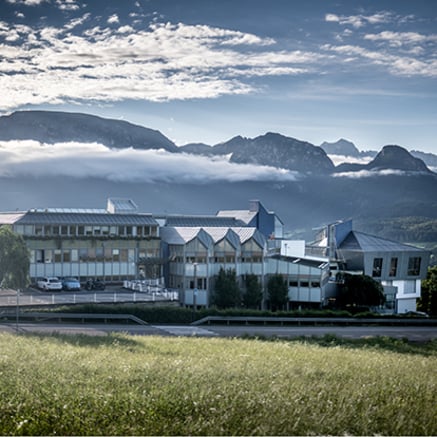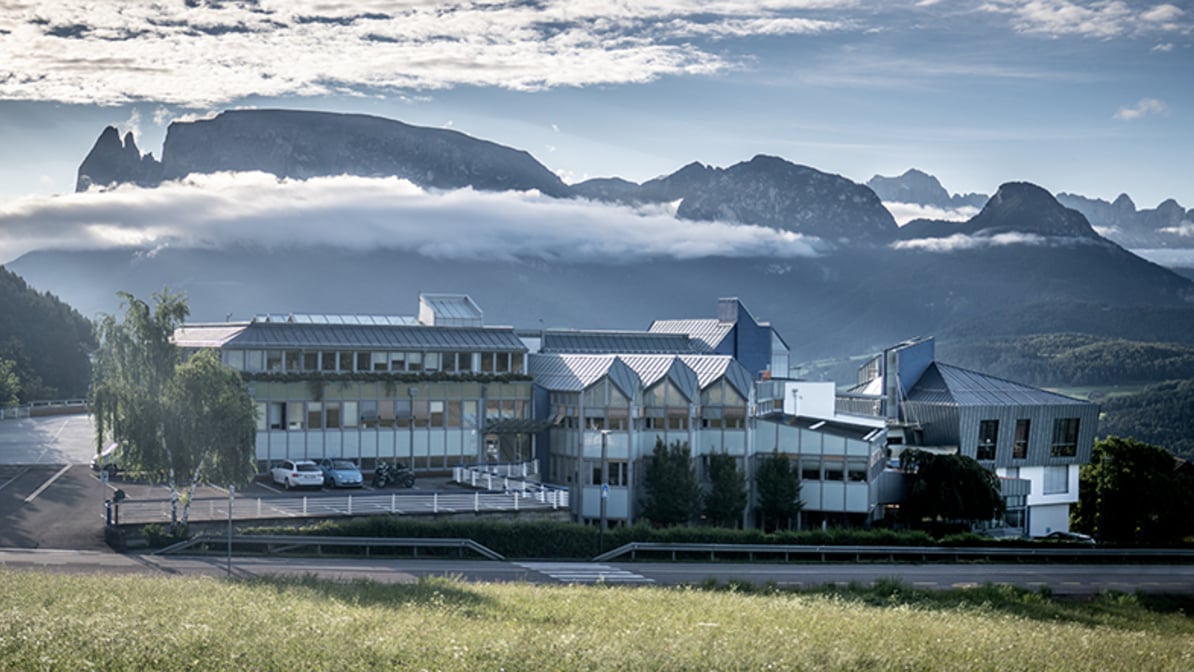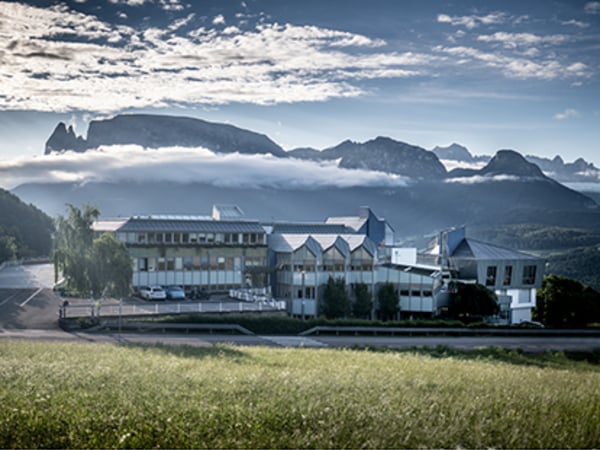
The art of combining.
50 years of company history at one table. A discussion about the courage required for innovation and the future of windows.
At 1,156 metres above sea level, on the Ritten plateau overlooking the city of Bozen and just a few kilometres from the Finstral headquarters, stands the Finstral conservatory plant in Klobenstein. Production is stopped for an afternoon and a large table stands in the workshop. Six members of the Oberrauch family, seven guests and two moderators take their seats to take stock of 50 years of Finstral and what the future holds. An extraordinary combination of people whose intelligent teamwork makes clear how this enterprise from South Tyrol can repeatedly set new standards in window construction: this is last but not least reflected in their unique expertise in materials. Plastic, glass, aluminium ForRes, wood – at Finstral almost everything is produced, processed and skilfully combined. Taking these five materials, a conversation develops about the courage required to innovate, the story of Finstral, personal memories and the future of windows.
Interviewers: Oliver Herwig, Stefan Sippell
Let’s start with uPVC. No other material has had such an influence on the company. It has been at the core of every Finstral window for 50 years now.UPVCor: right from the start the best materialHans Oberrauch, you come from a family of woodworkers. You made your first uPVC windows back in 1969. What did the change to a new material mean for you personally?H. Oberrauch We made everything in the carpentry shop: doors, furniture and even windows. So we knew that wood had weaknesses for example, that it weathers over time. The idea that uPVC does not entail all these problems fascinated me.
So you wanted a solution to problems and therefore tried...H. Oberrauch Yes, although I have to say that windows were already being made of uPVC in the 1960s. However, these were hardly a match for today’s quality features. But when Hoechst and Dynamit Nobel brought out new, impact-resistant plastics, such as Hostalit Z and Trocal, we finally gained sufficient confidence to try out uPVC.
“As carpenters we knew that wood has its weaknesses. The idea that uPVC does not entail all these problems fascinated me.”
Hans Oberrauch
Interviewers: Oliver Herwig, Stefan Sippell
Let’s start with uPVC. No other material has had such an influence on the company. It has been at the core of every Finstral window for 50 years now.UPVCor: right from the start the best materialHans Oberrauch, you come from a family of woodworkers. You made your first uPVC windows back in 1969. What did the change to a new material mean for you personally?H. Oberrauch We made everything in the carpentry shop: doors, furniture and even windows. So we knew that wood had weaknesses for example, that it weathers over time. The idea that uPVC does not entail all these problems fascinated me.
So you wanted a solution to problems and therefore tried...H. Oberrauch Yes, although I have to say that windows were already being made of uPVC in the 1960s. However, these were hardly a match for today’s quality features. But when Hoechst and Dynamit Nobel brought out new, impact-resistant plastics, such as Hostalit Z and Trocal, we finally gained sufficient confidence to try out uPVC.
“As carpenters we knew that wood has its weaknesses. The idea that uPVC does not entail all these problems fascinated me.”
Hans Oberrauch
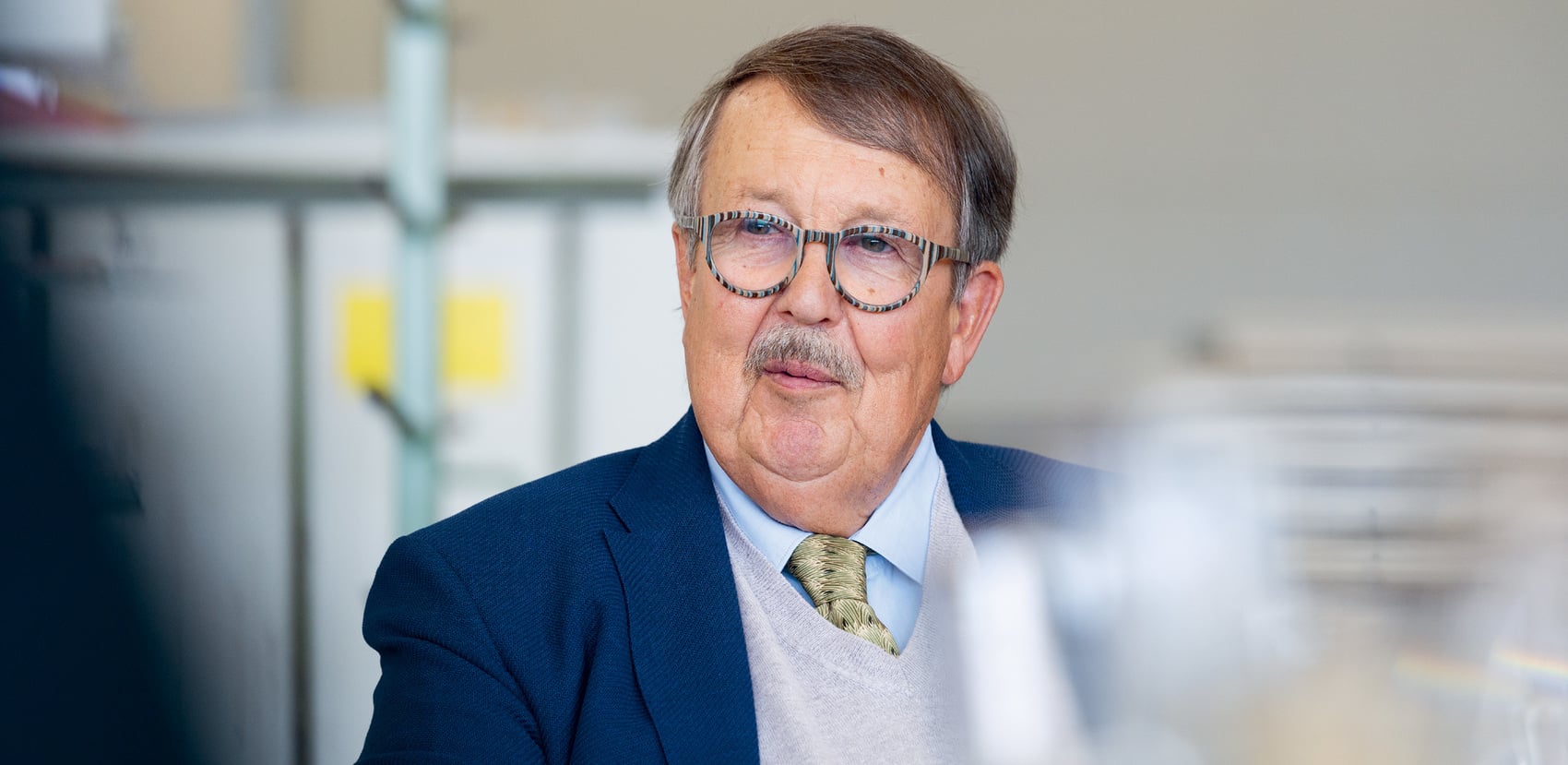
Hans Oberrauch, chairman of the board of directors, founded Finstral in 1969. It was also he who invented the name – a reference to the Italian “finestra” and the sunbeams that stream through a window. He also had a weakness for Finnish design, which is why he liked the first syllable “Fin”.
Did you have a particular vision from the outset? Or a specific corporate strategy to realise it?H. Oberrauch Our strategy was very simple: we first wanted to sell locally. The mid-1970s then gave us the opportunity to export to Germany via dealers. We took advantage of this opportunity and then started to define our own path and pursue it consistently. We had some ideas right from the start, for example developing our own profile extrusion. Although we only implemented this plan in 1980, it was always clear that we would have to do it ourselves.
Helmuth Seebacher, your task in the company is to redevelop and optimise Finstral products. What advantages does uPVC offer for window construction?Seebacher A vast number. UPVC is highly durable. It can be easily processed. It has good insulating properties. Fittings can also be securely fastened, which is very important. And uPVC stays colour-fast over time. In my opinion, uPVC is simply the best material to use for windows.
You joined Finstral in 1982. Do you remember what was the mood in the company back then?Seebacher We were a relatively small, close-knit team back then. We celebrated everyone’s birthdays and in the evenings we all would go for a drink. Those were good, intensive times. Now Finstral is much bigger, with around 180 employees in Unterinn alone. Although there is still a unique Finstral spirit, inevitably it has become more difficult to have everyone in one place and to meet. Simply because you don’t come across the others so often.
Mr Oberrauch, what was it like – did you have to learn how to build a corporate culture?H. Oberrauch No, not really. From early on we learned in the carpentry shop how to deal with people. Our aim was always to be good employers, producers, suppliers and partners. That is very important to us.
It sounds so easy when you say it... So let’s ask one of Finstral’s most loyal partners. Marziale Bonasio, you were one of the first Finstral dealers in Italy. How did that come about?Bonasio I have been working with Finstral and the wonderful Oberrauch family for 33 years. It all started in the autumn of 1985. I had already had some experience in the window industry and decided to start up my own business. Finstral’s good reputation made me really want to sell their windows. So I called Finstral until I finally got an appointment with Hans Oberrauch after a month of trying. One rainy day I set off up the winding road on the Ritten mountain. After some time I wasn’t sure if I was still on the right road. So I stopped at a phone box, called Finstral, and asked the girl on the switchboard: “Am I on the right road?”, and she answered: “When you think you have gone the wrong way, just keep going and you’ll be fine.” And sure enough I found it. (Laughs.) I explained my plans to Hans Oberrauch in his office. He didn’t say a word, he just listened. So I kept talking, even though I was starting to become a bit nervous. And right at the very end, after a long pause, he said: “Listen, I’ll give you all our customer contacts in Milan. I’ll supply you with all the windows you want and you can pay me for them once you’ve fitted them.” He shook my hand and that was that. That’s how my company “ThermoInfissi” started. An incredible leap of faith, one that I still appreciate today.
Italy has its own design tradition in which plastics have played a big role. What so convinced you about Finstral at the time? Was it uPVC?Bonasio Yes, but also the design. What impressed me was that Finstral windows differed visually from other uPVC profiles. They were narrow, with bevelled and restrained glazing beads. Even then, Finstral was emphasising design.
Glass or: committed to qualityLuis Oberrauch, you are the younger brother of Hans Oberrauch. Were you also involved in establishing Finstral?L. Oberrauch When Finstral was founded I was just 14 years old and still in school. But I had already worked there during the summer holidays and gained experience of different areas. I quickly realised that I wanted to join the company. Finstral was also growing fast at the time and the company could use the additional help.
Finstral very early on decided to produce its own glass as well as extruding its own profiles. How did that come about?L. Oberrauch First of all, we were simply glad to have good glass suppliers. At first we did not even have enough capital to go into glass production ourselves. But at some point we had the idea of developing our own glass production. We had enough space because we had recently purchased the plant in Scurelle down in Trentino. We then intensively studied glass as a material and became pretty good glass specialists. As a window manufacturer, it was an obvious step to move into glass. Having our own production allows us greater freedom of design and of course also has logistical advantages.
Are you still expecting innovative advances to be made in glass ?L. Oberrauch Absolutely, we have just made another major leap forward with triple glazing that can let as much light through as double glazing. That now forms part of our programme. And I believe that in future glass will become even more dynamic and adapt appropriately to the situation: temperature, insolation, transparency and so on. Glass still has great potential as a material.
You mentioned the plant in Scurelle. Setting up your own glass production there was a bold business decision at the time. Hand on heart: weren’t you a little bit nervous?L. Oberrauch No, I don’t remember it being like that. We were confident that it would all work out.
“Having our own glass production allows us greater freedom of design and also offers logistical advantages.”
Luis Oberrauch
Helmuth Seebacher, your task in the company is to redevelop and optimise Finstral products. What advantages does uPVC offer for window construction?Seebacher A vast number. UPVC is highly durable. It can be easily processed. It has good insulating properties. Fittings can also be securely fastened, which is very important. And uPVC stays colour-fast over time. In my opinion, uPVC is simply the best material to use for windows.
You joined Finstral in 1982. Do you remember what was the mood in the company back then?Seebacher We were a relatively small, close-knit team back then. We celebrated everyone’s birthdays and in the evenings we all would go for a drink. Those were good, intensive times. Now Finstral is much bigger, with around 180 employees in Unterinn alone. Although there is still a unique Finstral spirit, inevitably it has become more difficult to have everyone in one place and to meet. Simply because you don’t come across the others so often.
Mr Oberrauch, what was it like – did you have to learn how to build a corporate culture?H. Oberrauch No, not really. From early on we learned in the carpentry shop how to deal with people. Our aim was always to be good employers, producers, suppliers and partners. That is very important to us.
It sounds so easy when you say it... So let’s ask one of Finstral’s most loyal partners. Marziale Bonasio, you were one of the first Finstral dealers in Italy. How did that come about?Bonasio I have been working with Finstral and the wonderful Oberrauch family for 33 years. It all started in the autumn of 1985. I had already had some experience in the window industry and decided to start up my own business. Finstral’s good reputation made me really want to sell their windows. So I called Finstral until I finally got an appointment with Hans Oberrauch after a month of trying. One rainy day I set off up the winding road on the Ritten mountain. After some time I wasn’t sure if I was still on the right road. So I stopped at a phone box, called Finstral, and asked the girl on the switchboard: “Am I on the right road?”, and she answered: “When you think you have gone the wrong way, just keep going and you’ll be fine.” And sure enough I found it. (Laughs.) I explained my plans to Hans Oberrauch in his office. He didn’t say a word, he just listened. So I kept talking, even though I was starting to become a bit nervous. And right at the very end, after a long pause, he said: “Listen, I’ll give you all our customer contacts in Milan. I’ll supply you with all the windows you want and you can pay me for them once you’ve fitted them.” He shook my hand and that was that. That’s how my company “ThermoInfissi” started. An incredible leap of faith, one that I still appreciate today.
Italy has its own design tradition in which plastics have played a big role. What so convinced you about Finstral at the time? Was it uPVC?Bonasio Yes, but also the design. What impressed me was that Finstral windows differed visually from other uPVC profiles. They were narrow, with bevelled and restrained glazing beads. Even then, Finstral was emphasising design.
Glass or: committed to qualityLuis Oberrauch, you are the younger brother of Hans Oberrauch. Were you also involved in establishing Finstral?L. Oberrauch When Finstral was founded I was just 14 years old and still in school. But I had already worked there during the summer holidays and gained experience of different areas. I quickly realised that I wanted to join the company. Finstral was also growing fast at the time and the company could use the additional help.
Finstral very early on decided to produce its own glass as well as extruding its own profiles. How did that come about?L. Oberrauch First of all, we were simply glad to have good glass suppliers. At first we did not even have enough capital to go into glass production ourselves. But at some point we had the idea of developing our own glass production. We had enough space because we had recently purchased the plant in Scurelle down in Trentino. We then intensively studied glass as a material and became pretty good glass specialists. As a window manufacturer, it was an obvious step to move into glass. Having our own production allows us greater freedom of design and of course also has logistical advantages.
Are you still expecting innovative advances to be made in glass ?L. Oberrauch Absolutely, we have just made another major leap forward with triple glazing that can let as much light through as double glazing. That now forms part of our programme. And I believe that in future glass will become even more dynamic and adapt appropriately to the situation: temperature, insolation, transparency and so on. Glass still has great potential as a material.
You mentioned the plant in Scurelle. Setting up your own glass production there was a bold business decision at the time. Hand on heart: weren’t you a little bit nervous?L. Oberrauch No, I don’t remember it being like that. We were confident that it would all work out.
“Having our own glass production allows us greater freedom of design and also offers logistical advantages.”
Luis Oberrauch

Luis Oberrauch, younger brother of Hans Oberrauch, vice-chairman of the board of directors. He joined the company in 1976 and is responsible among other things for sales, purchasing and quality management.

Joachim Oberrauch, son of Hans Oberrauch and a member of the board of directors, is responsible among other things for marketing and product development.

Florian Oberrauch, son of Luis Oberrauch, member of the board of directors, is responsible for production and logistics.
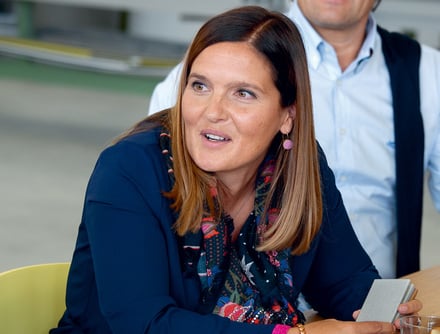
Verena Oberrauch, daughter of Hans Oberrauch, member of the board of directors, is responsible for sales in Belgium and Switzerland. She is also responsible for the area of conservatories.

Kristin Oberrauch, daughter of Luis Oberrauch, head of direct sales, South Tyrol to Verona, has been with the company since 2013.
Professor Sieberath, your life contains a nice parallel to Hans Oberrauch’s, because you too were a carpenter – and now you have become the “Pope of Windows”, as people call you today...Sieberath Yes, my father made wooden windows, but unlike the Oberrauch family he stayed in the carpentry trade. Looking back, that was perhaps a mistake. Working with uPVC would certainly have offered better prospects. But we also have a shared history. The Institut für Fenstertechnik [Institute of Window Technology] was founded in 1966, just three years before Finstral. I first visited Finstral up on the Ritten in the late 1990s to exchange views with Hans Oberrauch on ISO 9000, i.e. quality management. Right from the start I realised that people work differently in South Tyrol compared to Germany. A lot more emphasis is placed on trust and personal feeling. In other words, it took a little while. After the third time we talked, Mr Oberrauch said, “Yes, that’s all fine. We want to commit ourselves to quality. Since then, we have been working together to continually develop and certify the company in various areas, from window design through to assembly and management quality.”
On the subject of design: a window consists of a combination of glass and frame. What is so special about this combination?Sieberath Even the best glass is nothing without a proper frame to hold and carry it. And, conversely, exactly the same applies. The connecting element is the glazing, i.e. the insertion of the glass into the frame. A lot of technical mistakes are possible here...
...and Finstral doesn’t make any?Sieberath Theoretically no, because we have worked together for many years so as to develop and maintain the highest quality standards. In practice, of course, 100 percent quality is never possible.
Certification as a means of ensuring quality is found in many technological industries. Finstral is a European champion in certification – no other window manufacturer can match them. Was the discussion with Hans Oberrauch the starting point for this development?Sieberath The ift had of course already examined Finstral products before I arrived. But Hans Oberrauch and I probably provided the initial impetus to set new standards in certification. Thus we systematically took the whole company in hand: design, purchasing, sales, logistics. We also for the first time looked at construction sites – right through to the unique concept of dealer certification. This way we can be sure that a good product is also properly installed. This is important, because more than half of all the problems we encounter are due to a good product not being installed properly.
Back to glass and the ever-changing trends: glass surfaces are getting bigger, while frames are becoming more delicate... why?Sieberath Quite simply, because it’s possible. Because glass is one of the materials that has allowed our windows to be furthest developed over the last years. If you just look at the enormous improvements in insulation values resulting from the development from single-pane glass to laminated insulation glazing, large glass surfaces and good insulation are no longer a contradiction in terms.
Thomas Pederiva I would like to make a brief intervention as a planner. Like many builders, we are looking for ever larger windows with ever smaller frames to let yet more light into each room. This works particularly well with uPVC and aluminium windows, as the frames can be made very narrow. But Finstral can also master special techniques that allow for exceptionally large glass surfaces of up to seven square metres. In this way, glass can now be employed as an extra wall without any safety risk.
“We are looking for ever larger windows with ever smaller frames to let yet more light into each room.”
Thomas Pederiva
Aluminium or: the beginning of modular thinkingJoachim Oberrauch, as the son of Hans Oberrauch you grew up in a company that had already grown and further expanded. How can you describe your youth? Did you play with window profiles instead of Lego?J. Oberrauch (Laughs.) No, it was not as bad as that, I enjoyed playing with Lego. But of course, Finstral was an ever-present, not least because I grew up in Unterinn close to the company’s head office. I often accompanied my father onto the production floor, which I loved doing as a child.
Since 1985 Finstral has also been using aluminium veneering for its windows. How and why did you come to start using aluminium?J. Oberrauch Aluminium is an interesting material that offers numerous advantages. It is weather resistant. It is very easy to mould. It can be easily painted. It has just one disadvantage, at least as far as making windows is concerned: it has very good conductive properties. Aluminium, in contrast to uPVC, is not so suitable as an insulating material. So why do we still use aluminium for windows? Because there were more and more customers who wanted dark external window frames. But dark-coloured uPVC will heat in strong sunlight and may deform. Aluminium by contrast remains stable even at very high temperatures. And so we came up with the idea of using aluminium on the outside, which can then be coated with any one of hundreds of different shades. This painted aluminium layer is absolutely heat-resistant. It is basically like a second skin attached to the outside. A uPVC-aluminium window is, in terms of value for money, currently the best type of window you can buy.
Is it mainly a question of an attractive price-performance ratio, or are we also seeing an aesthetic development?J. Oberrauch Yes, aluminium has a very distinctive, high-quality image as a material. It also has a special feel and aesthetics that are favoured by many builders and architects. That is why so many houses now feature aluminium fittings, both on the outside and the inside. At the core of our windows remains the uPVC profile, however. This allows us to combine the advantages of both materials: the aesthetics of aluminium and, in the middle, the insulation and watertightness of uPVC.
Was this the beginning of modular window construction for you – taking as your motto: we simply combine the best of all worlds?J. Oberrauch Yes, even if that’s not what we called it back then. Years later, we turned this idea into an entire window system, our modular FIN-Project system. And, when I was with Helmuth Seebacher together at the “Rosenheim Window Days” back in 2012, there was a lecture on innovation: “The modular window”. We looked at each other and we were delighted, as we were about to roll out FIN-Project onto the market.
H. Seebacher We had after all been working on it for years in the development department. And so we were ready just in time. (Laughs.)
J. Oberrauch And today, you have to say, it was a very good idea that we are continuing to expand. We can now offer four different materials on the inside: aluminium, glass, wood and ForRes. This great freedom of design appeals to demanding customers in particular.
L. Oberrauch That’s true. One week ago I talked to a couple who had bought FIN-Project windows. I’ve known them for a long time, and they would never have previously considered buying a so-called plastic window. But FIN-Project finally convinced them. The wife enthused for three quarters of an hour about her new windows. At first she even had problems getting to sleep because she could no longer hear the usual noise from outside: how strange is that? So I came to the realisation: we would never convince such customers with even the very best uPVC windows. But the diversity of materials used allows us to reach a completely different clientèle.
Finstral in theory offers 1.3 billion window variations. Kristin Oberrauch, how do you manage to communicate this almost infinite variety to customers?K. Oberrauch Of course, you can’t explain the entire product range to everyone. That would be too much for our customers. Nor is it necessary. We start filtering as soon as we meet: what does the customer want, and what does he or she need? A lot depends on knowing people, on empathy. A good salesperson needs both. But of course the sheer variety of possibilities is what differentiates us on the market: we can offer more, we have more product solutions. Architects, for example, have to explain the modular system and design possibilities very precisely simply because they are more demanding and go into greater detail.
Thomas Pederiva, as a planner you have just nodded in agreement – what do you expect from a window manufacturer in terms of service and quality?Pederiva That all my wishes can as far as possible be combined. And Finstral covers almost all requirements with its modular system: floor-level profiles, low thresholds, integrated sun protection, aesthetic materials combinations... Another major advantage is that you can get everything from one source at Finstral, from the drawings showing building joints to installation of the mounting frame: and I really appreciate the fact that there is always a designated contact person for every topic – this makes handling large projects quick and straightforward.
Finstral always explains windows in four dimensions: exterior, centre, interior, all-around. Do the teaching methods of the so-called Finstral planner make the job easier for you?Pederiva The Finstral planner’s four-finger principle seems strange at first. But it is a good orientation method because it is consistently applied to all products. So when a new product is added, it can be understood directly in the context. Which is very helpful.
What experience have you had with colleagues when talking about Finstral? Do you experience any reservations regarding uPVC windows?Pederiva It is true that planners and builders tend to use materials that offer the best match in aesthetic terms. On reflection, however, it is the technical and qualitative arguments that count. If you bring these aspects up, they will of course have a decisive influence on the selection made. For example, in the hotel trade, which is where I have many of my customers, maintenance is a major issue – which is a lot easier with uPVC and aluminium than with wooden windows.
Finstral is self-sufficient in uPVC and glass as materials and can produce everything itself. What about aluminium?J. Oberrauch In line with our claim of being a “one-stop shop”, we are in fact embarking on the processing of aluminium and are currently building our own paint shop at our plant in Borgo, Trentino, which will start operating in 2019. This decision was also made for a good reason. It is important for us that we also have control over the quality of aluminium. While a paint shop offers logistical advantages of its own. And more freedom of design. In addition, we can then ourselves work intensively with new aluminium surfaces.
ForRes or: sustainability and mounting framesVerena Oberrauch, how did you come to work for the company? Was the decision just as inevitable as for your uncle Luis or your brother Joachim?V. Oberrauch (Laughs.) In retrospect it was inevitable, even if it took a little longer. I’m glad that I worked outside the company for a while. But eventually the point came when I thought: I want to help write this family history. And the more I work here, the more my enthusiasm grows. I also really enjoy the day-to-day working with the family.
It would be daunting for many people to have to work with people you are related to or have known from childhood.V. Oberrauch Many of the staff can actually still remember me as a toddler – for me there is something really nice and intimate about that. The company is for us also part of the family in a way. Each of us is responsible for our own areas and we are deeply involved in every process. At the same time we consciously strive to ensure that the hierarchies remain flat. That is why, for example, we have work circles for all major issues in the company. These are interdepartmental round tables that bring together all staff and management involved. We discuss everything and question each other there – self-critically and without any taboos. And that is also the framework in which we make decisions together, so that everyone can understand and support them – like in a good family. This way of dealing with each other is a matter of course for us, but new employees or outsiders often bring up the matter of this particular culture at Finstral.
“Eventually the point came when I thought: I want to help write this family history.”
Verena Oberrauch
F. Oberrauch We regard it as very important that all opinions can be heard and taken seriously. That allows us to pursue the matter further. After all, all of us are ultimately responsible for the future of the company. Our aim is to make demanding customers happy. That is always a priority.
It’s what you could call sustainable corporate governance. Let’s stay with the concept of sustainability. For some years now, you have been working with ForRes, an upcycling material made from rice husks and plastic waste. Mr Seebacher, what did you think when you heard about the idea of working with rice husks?Seebacher Oh yes, the rice husks – I was at first surprised. But then we experimented with the material a great deal. And the first time I held a ForRes profile in my hand, I thought that it might be of interest for many applications.
When you start experimenting, do you proceed step by step or do you have a grand vision there in your head?Seebacher With completely new developments, we always go step by step: trying things out, improving, developing things further… We are currently using ForRes for sliding doors and window shutters and on the inside of our windows. But I am sure that we will test out and discover more applications.
Osvaldo Bona, you have now seen and installed all the materials used by Finstral. How does the market react to ForRes?Bona I have not yet used ForRes. You always have to do a lot of explaining when it comes to new materials and products. But once one person starts using it, others follow. For example, I began working with Finstral in 1995. At the time we wouldn’t talk about uPVC, but would instead refer disparagingly to plastic. After seeing our first buildings in Brixen, however, customers become more and more convinced. You could in fact say that Finstral and I have managed to change the image of uPVC in people’s minds.
H. Oberrauch That’s the way it is – it took a certain length of time for people to trust uPVC as a material. It will be the same for ForRes. Its time will come.
L. Oberrauch By the way, the notion of sustainability is not limited to ForRes. We were early on convinced that it is important to run our business sustainably, and we are constantly looking for ways to improve. As already mentioned by Professor Sieberath, our entire company is ISO-certified – including as regards energy and environmental management – and is subject to third-party monitoring. One consequence of this is our uPVC recycling plant, where we have been processing separated profile waste from production since 2011. It is crushed and then used in the production of new plastic profiles or for making ForRes.
Sieberath That’s another advantage of the modular principle. Because materials can of course only be recovered if they can easily be separated. This works well at Finstral as it is as easy to divide them up as it was to put them together. Customers can also choose to exchange certain components without having to replace the whole window.
F. Oberrauch I believe that the whole area of sustainability will present us with enormous challenges in the future. Because discerning customers, especially younger ones, will want to know how their windows are made. What was the quantity of resources employed, how much recycled material has been used? So we have to do more there and also become more and more transparent in terms of communication.
“Discerning customers, especially younger ones, will want to know how their windows are made.”
Florian Oberrauch
Mr Bona, does that accord with your experience as a builder? Is sustainability an issue for you and your customers?Bona Some people are very well informed about sustainability issues and attach great importance to these in construction. But sustainability is not just about materials. It is also always about the responsible use of other resources – such as time and labour. My favourite example is the mounting frame, which is a type of blind frame into which windows can be quickly and easily installed at the end of the construction phase. In Italy, and at Finstral, this mounting method is a matter of course, and I would never build without it. Yet it is unknown in Germany. That to me is a mystery.
Maybe you can answer the question, Professor Sieberath. Why are mounting frames not popular in Germany?Sieberath Mounting frames are actually a great solution and the ift has been advocating for them since the 1980s. But German architects often prefer to construct the building shell and then decide which windows they want to use. If you want to use mounting frames, you have to decide this a little earlier. But this can be offset against the ever shorter construction phases, the extra time gained for drying out the buildings... and the fact that the windows are protected from dirt and damage! It’s amazing how few architects in Germany use them.
Pederiva From a South Tyrolean perspective, we can only wonder why: for us, mounting frames are indispensable.
Romina Ferrari, you sell entry doors for Finstral. Presumably also with mounting frames?Ferrari While I don’t sell them directly, I always inform private clients and architects about mounting frames. Nowadays even the slightest scratch on the surface will be grounds for complaint. Mounting frames help prevent such damage. Customers expect a perfect surface both for doors and for windows. And then these elements are hammered into the building shell, then along comes the plasterer. This is an incomprehensible approach to quality issues.
Unlike Mr Seebacher, you have only been part of the Finstral family for a few years. What was your first impression of the company?Ferrari I have been working for Finstral for about four years, but I have known the company for much longer because I previously worked for a dealer-partner. But I really always wanted to work directly for Finstral. And I was totally impressed once I had done my first training, because Finstral does so much in a better and more thoughtful way than the others. For example, the Finstral planner with its four-finger principle of “exterior, centre, interior, all-around” – this is clear and concise. An enormous relief when dealing with customers, because the vast diversity of designs can be explained very easily.
From the point of view of a female employee, how would you summarise what is so special about Finstral for you in one sentence...?Ferrari The company gives a lot, but it gives nothing for free. But if you really want to make the effort, you can grow and become something working for Finstral.
Wood or: the past meets the future Florian Oberrauch, Finstral nowadays also offers real wood as another variant for the inside of windows. All from your own wood processing plant in Oppeano. Does this mean you are somehow returning to your roots? After all, your grandfather ran a carpentry shop.F. Oberrauch I believe that, as regards the history of Finstral, we are not harking back to an old chapter, but rather opening a new one. As Mr Pederiva said earlier, there are customers who insist on wood, who appreciate its unique look and feel. And that is exactly what we can offer. What is new is that we have recently started cutting and processing the wood in our own works. Developing such skills was not easy, as wood is relatively demanding as a material: it grows naturally and thus also presents irregularities. But what drove us on was the idea of combining glass, wood, plastic and aluminium. I think that this diversity of materials means that we are optimising our windows into the most innovative models currently on the market.
Stefanie Winter, as a dealer you are in contact with customers every day. Is wood still a popular material?Winter Wood is always in demand. But a classic wooden window is extremely solid, which is however not such a good selling point. Another deterrent factor is that wood requires plenty of care on the outside. Finstral, on the other hand, combines a very slim frame appearance with solid wood veneering – but only on the inside, i.e. where the wood is not in need of care and, because it is protected, will practically last forever. This means I can simultaneously meet all customer requests.
How do you convince your customers of these advantages? How important is presentation when you first meet?Winter Very important. There are numerous manufacturers of uPVC windows in our region. So we have to clearly differentiate ourselves, especially in terms of quality: we offer good products, good service and certified installation. Our customer consultations take on average from one and a half to two and a half hours. The planner counters that have been in use at Finstral for some years now are ideal for this. Here too the four-finger principle – “exterior, centre, interior, all-around” – applies. No other window manufacturer offers this. Customers often have fun picking their windows if they are guided through the many possibilities in a structured way. I would say that it is the perfect way to help them choose a perfect product.
What is coming next in the window industry? Are there new ideas or new materials?Sieberath There will be plenty of new developments in window construction: in respect of metal, attempts are being made to improve on the weaknesses of aluminium, such as its linear expansion or its thermal conductivity, through the use of new techniques. In Rosenheim we are working intensively on wood pulping so as to be able to add wood and cellulose directly to the uPVC during profile extrusion. As regards plastics, our aim is to substitute them with renewable raw materials. The entrepreneurs of the future have to address these and similar topics today.
F. Oberrauch In order to save resources we are currently examining whether we can produce FIN-Project entirely from recycled materials. We’re already doing this with uPVC in any case. Aluminium is actually extremely good when it comes to recycling. And we also work very sparingly with wood, even if it is a renewable raw material.
The entrepreneurs who will decide the future of Finstral are sitting at the table, as it is the second generation of the Oberrauch family that will lead the business into the future. What do you particularly want to retain? And in which areas do you want to see new developments?V. Oberrauch We want in all cases to retain the openness that the older generation exemplifies as well as the courage to try out the new. What else do we want to introduce? More women in positions of responsibility! Women influence a company’s culture in different ways than men. That’s why I’m so pleased that there are women now sitting at the table here, performing a role that has until now usually been reserved to men.
K. Oberrauch We want at all events to retain our spirit of innovation. Our claim is that we make the best windows and offer the widest range of innovations on the market. This will also require greater investment. Here we can draw on the example of our forefathers: don’t hesitate for too long and make your move at the right moment. Of course, there are also fossilised practices in the company that should be abandoned. But the spirit here is on the whole pretty good.
“We want at all events to retain our spirit of innovation.”
Kristin Oberrauch
Finally, here is one last question for everyone at the table to answer: which is your favourite material? Most people find it hard to choose, but the following list is what we have: glass is the material of choice for Luis, Kristin and Florian Oberrauch and for Osvaldo Bona. uPVC was chosen by Helmuth Seebacher, Joachim Oberrauch, Romina Ferrari and Marziale Bonasio. Thomas Pederiva, Stefanie Winter and Verena Oberrauch opted for aluminium. And Professor Ulrich Sieberath, himself from a family of carpenters, went for wood. Only the founder of Finstral, Hans Oberrauch, remains on the fence and will not commit himself. We can make an exception for him, even if the others protest...H. Oberrauch My favourite is a combination. Aluminium outside for weather protection and its variety of colours. uPVC in the centre for insulation and ensuring solid fittings. While inside you have a free choice from uPVC, aluminium, ForRes, wood, glass – whatever you like. We have now obtained a patent for our modular FIN-Project window system. And I will be delighted if everyone thinks that it is beautiful to look at and a high-quality solution.
On the subject of design: a window consists of a combination of glass and frame. What is so special about this combination?Sieberath Even the best glass is nothing without a proper frame to hold and carry it. And, conversely, exactly the same applies. The connecting element is the glazing, i.e. the insertion of the glass into the frame. A lot of technical mistakes are possible here...
...and Finstral doesn’t make any?Sieberath Theoretically no, because we have worked together for many years so as to develop and maintain the highest quality standards. In practice, of course, 100 percent quality is never possible.
Certification as a means of ensuring quality is found in many technological industries. Finstral is a European champion in certification – no other window manufacturer can match them. Was the discussion with Hans Oberrauch the starting point for this development?Sieberath The ift had of course already examined Finstral products before I arrived. But Hans Oberrauch and I probably provided the initial impetus to set new standards in certification. Thus we systematically took the whole company in hand: design, purchasing, sales, logistics. We also for the first time looked at construction sites – right through to the unique concept of dealer certification. This way we can be sure that a good product is also properly installed. This is important, because more than half of all the problems we encounter are due to a good product not being installed properly.
Back to glass and the ever-changing trends: glass surfaces are getting bigger, while frames are becoming more delicate... why?Sieberath Quite simply, because it’s possible. Because glass is one of the materials that has allowed our windows to be furthest developed over the last years. If you just look at the enormous improvements in insulation values resulting from the development from single-pane glass to laminated insulation glazing, large glass surfaces and good insulation are no longer a contradiction in terms.
Thomas Pederiva I would like to make a brief intervention as a planner. Like many builders, we are looking for ever larger windows with ever smaller frames to let yet more light into each room. This works particularly well with uPVC and aluminium windows, as the frames can be made very narrow. But Finstral can also master special techniques that allow for exceptionally large glass surfaces of up to seven square metres. In this way, glass can now be employed as an extra wall without any safety risk.
“We are looking for ever larger windows with ever smaller frames to let yet more light into each room.”
Thomas Pederiva
Aluminium or: the beginning of modular thinkingJoachim Oberrauch, as the son of Hans Oberrauch you grew up in a company that had already grown and further expanded. How can you describe your youth? Did you play with window profiles instead of Lego?J. Oberrauch (Laughs.) No, it was not as bad as that, I enjoyed playing with Lego. But of course, Finstral was an ever-present, not least because I grew up in Unterinn close to the company’s head office. I often accompanied my father onto the production floor, which I loved doing as a child.
Since 1985 Finstral has also been using aluminium veneering for its windows. How and why did you come to start using aluminium?J. Oberrauch Aluminium is an interesting material that offers numerous advantages. It is weather resistant. It is very easy to mould. It can be easily painted. It has just one disadvantage, at least as far as making windows is concerned: it has very good conductive properties. Aluminium, in contrast to uPVC, is not so suitable as an insulating material. So why do we still use aluminium for windows? Because there were more and more customers who wanted dark external window frames. But dark-coloured uPVC will heat in strong sunlight and may deform. Aluminium by contrast remains stable even at very high temperatures. And so we came up with the idea of using aluminium on the outside, which can then be coated with any one of hundreds of different shades. This painted aluminium layer is absolutely heat-resistant. It is basically like a second skin attached to the outside. A uPVC-aluminium window is, in terms of value for money, currently the best type of window you can buy.
Is it mainly a question of an attractive price-performance ratio, or are we also seeing an aesthetic development?J. Oberrauch Yes, aluminium has a very distinctive, high-quality image as a material. It also has a special feel and aesthetics that are favoured by many builders and architects. That is why so many houses now feature aluminium fittings, both on the outside and the inside. At the core of our windows remains the uPVC profile, however. This allows us to combine the advantages of both materials: the aesthetics of aluminium and, in the middle, the insulation and watertightness of uPVC.
Was this the beginning of modular window construction for you – taking as your motto: we simply combine the best of all worlds?J. Oberrauch Yes, even if that’s not what we called it back then. Years later, we turned this idea into an entire window system, our modular FIN-Project system. And, when I was with Helmuth Seebacher together at the “Rosenheim Window Days” back in 2012, there was a lecture on innovation: “The modular window”. We looked at each other and we were delighted, as we were about to roll out FIN-Project onto the market.
H. Seebacher We had after all been working on it for years in the development department. And so we were ready just in time. (Laughs.)
J. Oberrauch And today, you have to say, it was a very good idea that we are continuing to expand. We can now offer four different materials on the inside: aluminium, glass, wood and ForRes. This great freedom of design appeals to demanding customers in particular.
L. Oberrauch That’s true. One week ago I talked to a couple who had bought FIN-Project windows. I’ve known them for a long time, and they would never have previously considered buying a so-called plastic window. But FIN-Project finally convinced them. The wife enthused for three quarters of an hour about her new windows. At first she even had problems getting to sleep because she could no longer hear the usual noise from outside: how strange is that? So I came to the realisation: we would never convince such customers with even the very best uPVC windows. But the diversity of materials used allows us to reach a completely different clientèle.
Finstral in theory offers 1.3 billion window variations. Kristin Oberrauch, how do you manage to communicate this almost infinite variety to customers?K. Oberrauch Of course, you can’t explain the entire product range to everyone. That would be too much for our customers. Nor is it necessary. We start filtering as soon as we meet: what does the customer want, and what does he or she need? A lot depends on knowing people, on empathy. A good salesperson needs both. But of course the sheer variety of possibilities is what differentiates us on the market: we can offer more, we have more product solutions. Architects, for example, have to explain the modular system and design possibilities very precisely simply because they are more demanding and go into greater detail.
Thomas Pederiva, as a planner you have just nodded in agreement – what do you expect from a window manufacturer in terms of service and quality?Pederiva That all my wishes can as far as possible be combined. And Finstral covers almost all requirements with its modular system: floor-level profiles, low thresholds, integrated sun protection, aesthetic materials combinations... Another major advantage is that you can get everything from one source at Finstral, from the drawings showing building joints to installation of the mounting frame: and I really appreciate the fact that there is always a designated contact person for every topic – this makes handling large projects quick and straightforward.
Finstral always explains windows in four dimensions: exterior, centre, interior, all-around. Do the teaching methods of the so-called Finstral planner make the job easier for you?Pederiva The Finstral planner’s four-finger principle seems strange at first. But it is a good orientation method because it is consistently applied to all products. So when a new product is added, it can be understood directly in the context. Which is very helpful.
What experience have you had with colleagues when talking about Finstral? Do you experience any reservations regarding uPVC windows?Pederiva It is true that planners and builders tend to use materials that offer the best match in aesthetic terms. On reflection, however, it is the technical and qualitative arguments that count. If you bring these aspects up, they will of course have a decisive influence on the selection made. For example, in the hotel trade, which is where I have many of my customers, maintenance is a major issue – which is a lot easier with uPVC and aluminium than with wooden windows.
Finstral is self-sufficient in uPVC and glass as materials and can produce everything itself. What about aluminium?J. Oberrauch In line with our claim of being a “one-stop shop”, we are in fact embarking on the processing of aluminium and are currently building our own paint shop at our plant in Borgo, Trentino, which will start operating in 2019. This decision was also made for a good reason. It is important for us that we also have control over the quality of aluminium. While a paint shop offers logistical advantages of its own. And more freedom of design. In addition, we can then ourselves work intensively with new aluminium surfaces.
ForRes or: sustainability and mounting framesVerena Oberrauch, how did you come to work for the company? Was the decision just as inevitable as for your uncle Luis or your brother Joachim?V. Oberrauch (Laughs.) In retrospect it was inevitable, even if it took a little longer. I’m glad that I worked outside the company for a while. But eventually the point came when I thought: I want to help write this family history. And the more I work here, the more my enthusiasm grows. I also really enjoy the day-to-day working with the family.
It would be daunting for many people to have to work with people you are related to or have known from childhood.V. Oberrauch Many of the staff can actually still remember me as a toddler – for me there is something really nice and intimate about that. The company is for us also part of the family in a way. Each of us is responsible for our own areas and we are deeply involved in every process. At the same time we consciously strive to ensure that the hierarchies remain flat. That is why, for example, we have work circles for all major issues in the company. These are interdepartmental round tables that bring together all staff and management involved. We discuss everything and question each other there – self-critically and without any taboos. And that is also the framework in which we make decisions together, so that everyone can understand and support them – like in a good family. This way of dealing with each other is a matter of course for us, but new employees or outsiders often bring up the matter of this particular culture at Finstral.
“Eventually the point came when I thought: I want to help write this family history.”
Verena Oberrauch
F. Oberrauch We regard it as very important that all opinions can be heard and taken seriously. That allows us to pursue the matter further. After all, all of us are ultimately responsible for the future of the company. Our aim is to make demanding customers happy. That is always a priority.
It’s what you could call sustainable corporate governance. Let’s stay with the concept of sustainability. For some years now, you have been working with ForRes, an upcycling material made from rice husks and plastic waste. Mr Seebacher, what did you think when you heard about the idea of working with rice husks?Seebacher Oh yes, the rice husks – I was at first surprised. But then we experimented with the material a great deal. And the first time I held a ForRes profile in my hand, I thought that it might be of interest for many applications.
When you start experimenting, do you proceed step by step or do you have a grand vision there in your head?Seebacher With completely new developments, we always go step by step: trying things out, improving, developing things further… We are currently using ForRes for sliding doors and window shutters and on the inside of our windows. But I am sure that we will test out and discover more applications.
Osvaldo Bona, you have now seen and installed all the materials used by Finstral. How does the market react to ForRes?Bona I have not yet used ForRes. You always have to do a lot of explaining when it comes to new materials and products. But once one person starts using it, others follow. For example, I began working with Finstral in 1995. At the time we wouldn’t talk about uPVC, but would instead refer disparagingly to plastic. After seeing our first buildings in Brixen, however, customers become more and more convinced. You could in fact say that Finstral and I have managed to change the image of uPVC in people’s minds.
H. Oberrauch That’s the way it is – it took a certain length of time for people to trust uPVC as a material. It will be the same for ForRes. Its time will come.
L. Oberrauch By the way, the notion of sustainability is not limited to ForRes. We were early on convinced that it is important to run our business sustainably, and we are constantly looking for ways to improve. As already mentioned by Professor Sieberath, our entire company is ISO-certified – including as regards energy and environmental management – and is subject to third-party monitoring. One consequence of this is our uPVC recycling plant, where we have been processing separated profile waste from production since 2011. It is crushed and then used in the production of new plastic profiles or for making ForRes.
Sieberath That’s another advantage of the modular principle. Because materials can of course only be recovered if they can easily be separated. This works well at Finstral as it is as easy to divide them up as it was to put them together. Customers can also choose to exchange certain components without having to replace the whole window.
F. Oberrauch I believe that the whole area of sustainability will present us with enormous challenges in the future. Because discerning customers, especially younger ones, will want to know how their windows are made. What was the quantity of resources employed, how much recycled material has been used? So we have to do more there and also become more and more transparent in terms of communication.
“Discerning customers, especially younger ones, will want to know how their windows are made.”
Florian Oberrauch
Mr Bona, does that accord with your experience as a builder? Is sustainability an issue for you and your customers?Bona Some people are very well informed about sustainability issues and attach great importance to these in construction. But sustainability is not just about materials. It is also always about the responsible use of other resources – such as time and labour. My favourite example is the mounting frame, which is a type of blind frame into which windows can be quickly and easily installed at the end of the construction phase. In Italy, and at Finstral, this mounting method is a matter of course, and I would never build without it. Yet it is unknown in Germany. That to me is a mystery.
Maybe you can answer the question, Professor Sieberath. Why are mounting frames not popular in Germany?Sieberath Mounting frames are actually a great solution and the ift has been advocating for them since the 1980s. But German architects often prefer to construct the building shell and then decide which windows they want to use. If you want to use mounting frames, you have to decide this a little earlier. But this can be offset against the ever shorter construction phases, the extra time gained for drying out the buildings... and the fact that the windows are protected from dirt and damage! It’s amazing how few architects in Germany use them.
Pederiva From a South Tyrolean perspective, we can only wonder why: for us, mounting frames are indispensable.
Romina Ferrari, you sell entry doors for Finstral. Presumably also with mounting frames?Ferrari While I don’t sell them directly, I always inform private clients and architects about mounting frames. Nowadays even the slightest scratch on the surface will be grounds for complaint. Mounting frames help prevent such damage. Customers expect a perfect surface both for doors and for windows. And then these elements are hammered into the building shell, then along comes the plasterer. This is an incomprehensible approach to quality issues.
Unlike Mr Seebacher, you have only been part of the Finstral family for a few years. What was your first impression of the company?Ferrari I have been working for Finstral for about four years, but I have known the company for much longer because I previously worked for a dealer-partner. But I really always wanted to work directly for Finstral. And I was totally impressed once I had done my first training, because Finstral does so much in a better and more thoughtful way than the others. For example, the Finstral planner with its four-finger principle of “exterior, centre, interior, all-around” – this is clear and concise. An enormous relief when dealing with customers, because the vast diversity of designs can be explained very easily.
From the point of view of a female employee, how would you summarise what is so special about Finstral for you in one sentence...?Ferrari The company gives a lot, but it gives nothing for free. But if you really want to make the effort, you can grow and become something working for Finstral.
Wood or: the past meets the future Florian Oberrauch, Finstral nowadays also offers real wood as another variant for the inside of windows. All from your own wood processing plant in Oppeano. Does this mean you are somehow returning to your roots? After all, your grandfather ran a carpentry shop.F. Oberrauch I believe that, as regards the history of Finstral, we are not harking back to an old chapter, but rather opening a new one. As Mr Pederiva said earlier, there are customers who insist on wood, who appreciate its unique look and feel. And that is exactly what we can offer. What is new is that we have recently started cutting and processing the wood in our own works. Developing such skills was not easy, as wood is relatively demanding as a material: it grows naturally and thus also presents irregularities. But what drove us on was the idea of combining glass, wood, plastic and aluminium. I think that this diversity of materials means that we are optimising our windows into the most innovative models currently on the market.
Stefanie Winter, as a dealer you are in contact with customers every day. Is wood still a popular material?Winter Wood is always in demand. But a classic wooden window is extremely solid, which is however not such a good selling point. Another deterrent factor is that wood requires plenty of care on the outside. Finstral, on the other hand, combines a very slim frame appearance with solid wood veneering – but only on the inside, i.e. where the wood is not in need of care and, because it is protected, will practically last forever. This means I can simultaneously meet all customer requests.
How do you convince your customers of these advantages? How important is presentation when you first meet?Winter Very important. There are numerous manufacturers of uPVC windows in our region. So we have to clearly differentiate ourselves, especially in terms of quality: we offer good products, good service and certified installation. Our customer consultations take on average from one and a half to two and a half hours. The planner counters that have been in use at Finstral for some years now are ideal for this. Here too the four-finger principle – “exterior, centre, interior, all-around” – applies. No other window manufacturer offers this. Customers often have fun picking their windows if they are guided through the many possibilities in a structured way. I would say that it is the perfect way to help them choose a perfect product.
What is coming next in the window industry? Are there new ideas or new materials?Sieberath There will be plenty of new developments in window construction: in respect of metal, attempts are being made to improve on the weaknesses of aluminium, such as its linear expansion or its thermal conductivity, through the use of new techniques. In Rosenheim we are working intensively on wood pulping so as to be able to add wood and cellulose directly to the uPVC during profile extrusion. As regards plastics, our aim is to substitute them with renewable raw materials. The entrepreneurs of the future have to address these and similar topics today.
F. Oberrauch In order to save resources we are currently examining whether we can produce FIN-Project entirely from recycled materials. We’re already doing this with uPVC in any case. Aluminium is actually extremely good when it comes to recycling. And we also work very sparingly with wood, even if it is a renewable raw material.
The entrepreneurs who will decide the future of Finstral are sitting at the table, as it is the second generation of the Oberrauch family that will lead the business into the future. What do you particularly want to retain? And in which areas do you want to see new developments?V. Oberrauch We want in all cases to retain the openness that the older generation exemplifies as well as the courage to try out the new. What else do we want to introduce? More women in positions of responsibility! Women influence a company’s culture in different ways than men. That’s why I’m so pleased that there are women now sitting at the table here, performing a role that has until now usually been reserved to men.
K. Oberrauch We want at all events to retain our spirit of innovation. Our claim is that we make the best windows and offer the widest range of innovations on the market. This will also require greater investment. Here we can draw on the example of our forefathers: don’t hesitate for too long and make your move at the right moment. Of course, there are also fossilised practices in the company that should be abandoned. But the spirit here is on the whole pretty good.
“We want at all events to retain our spirit of innovation.”
Kristin Oberrauch
Finally, here is one last question for everyone at the table to answer: which is your favourite material? Most people find it hard to choose, but the following list is what we have: glass is the material of choice for Luis, Kristin and Florian Oberrauch and for Osvaldo Bona. uPVC was chosen by Helmuth Seebacher, Joachim Oberrauch, Romina Ferrari and Marziale Bonasio. Thomas Pederiva, Stefanie Winter and Verena Oberrauch opted for aluminium. And Professor Ulrich Sieberath, himself from a family of carpenters, went for wood. Only the founder of Finstral, Hans Oberrauch, remains on the fence and will not commit himself. We can make an exception for him, even if the others protest...H. Oberrauch My favourite is a combination. Aluminium outside for weather protection and its variety of colours. uPVC in the centre for insulation and ensuring solid fittings. While inside you have a free choice from uPVC, aluminium, ForRes, wood, glass – whatever you like. We have now obtained a patent for our modular FIN-Project window system. And I will be delighted if everyone thinks that it is beautiful to look at and a high-quality solution.
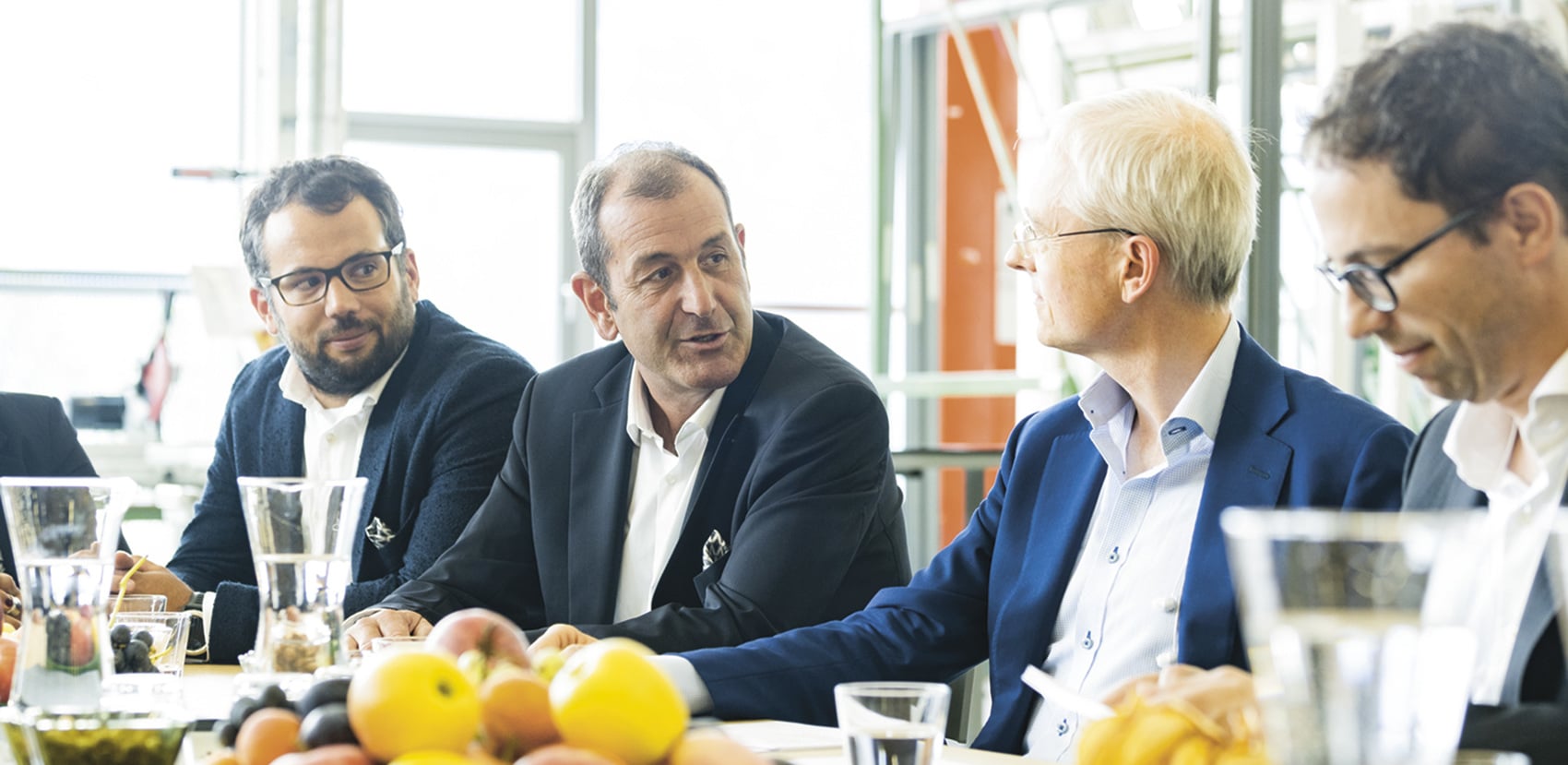
Helmuth Seebacher has been working for Finstral for more than 35 years and, as the head of systems engineering, introduces most of the innovations.


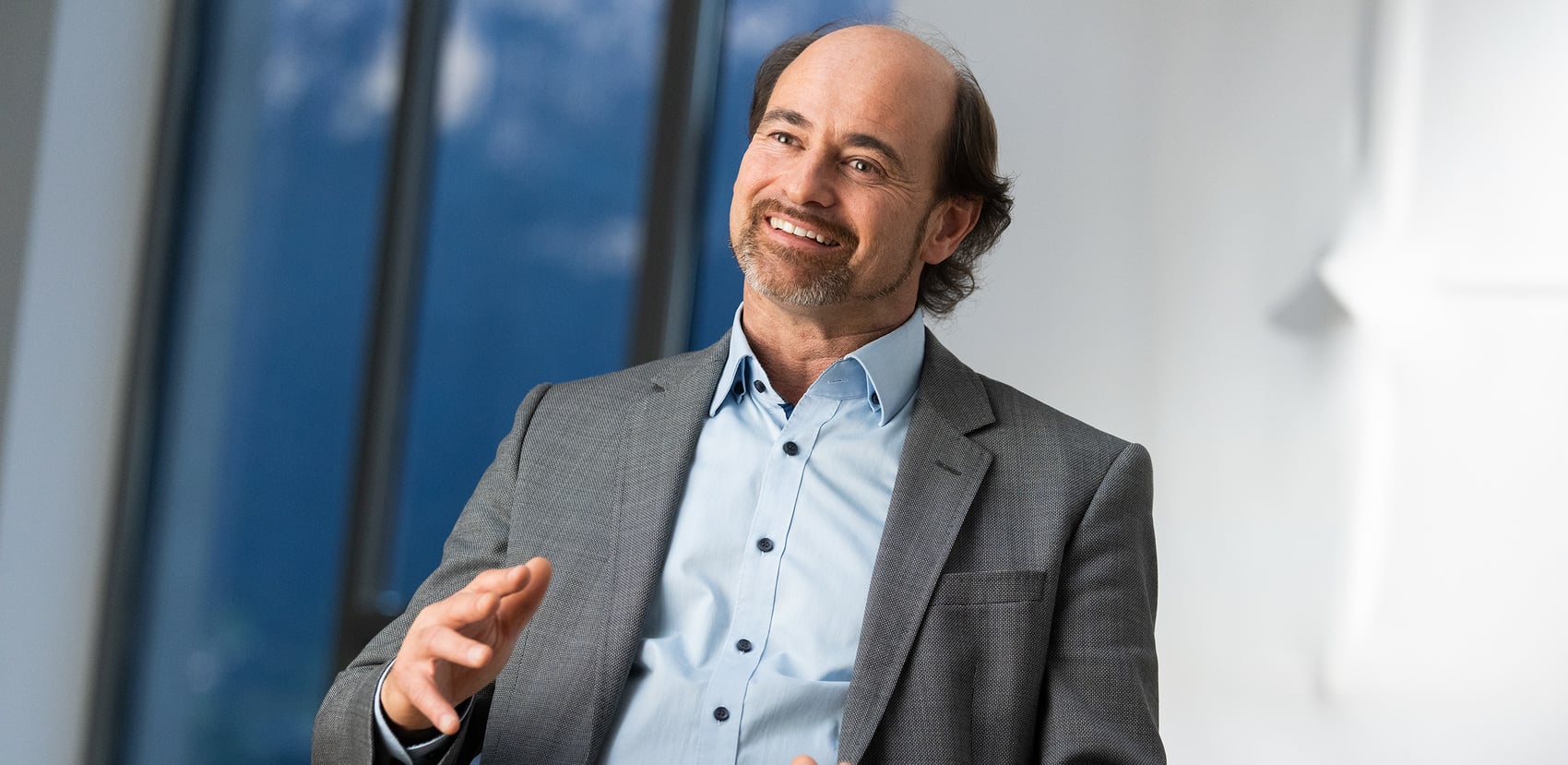

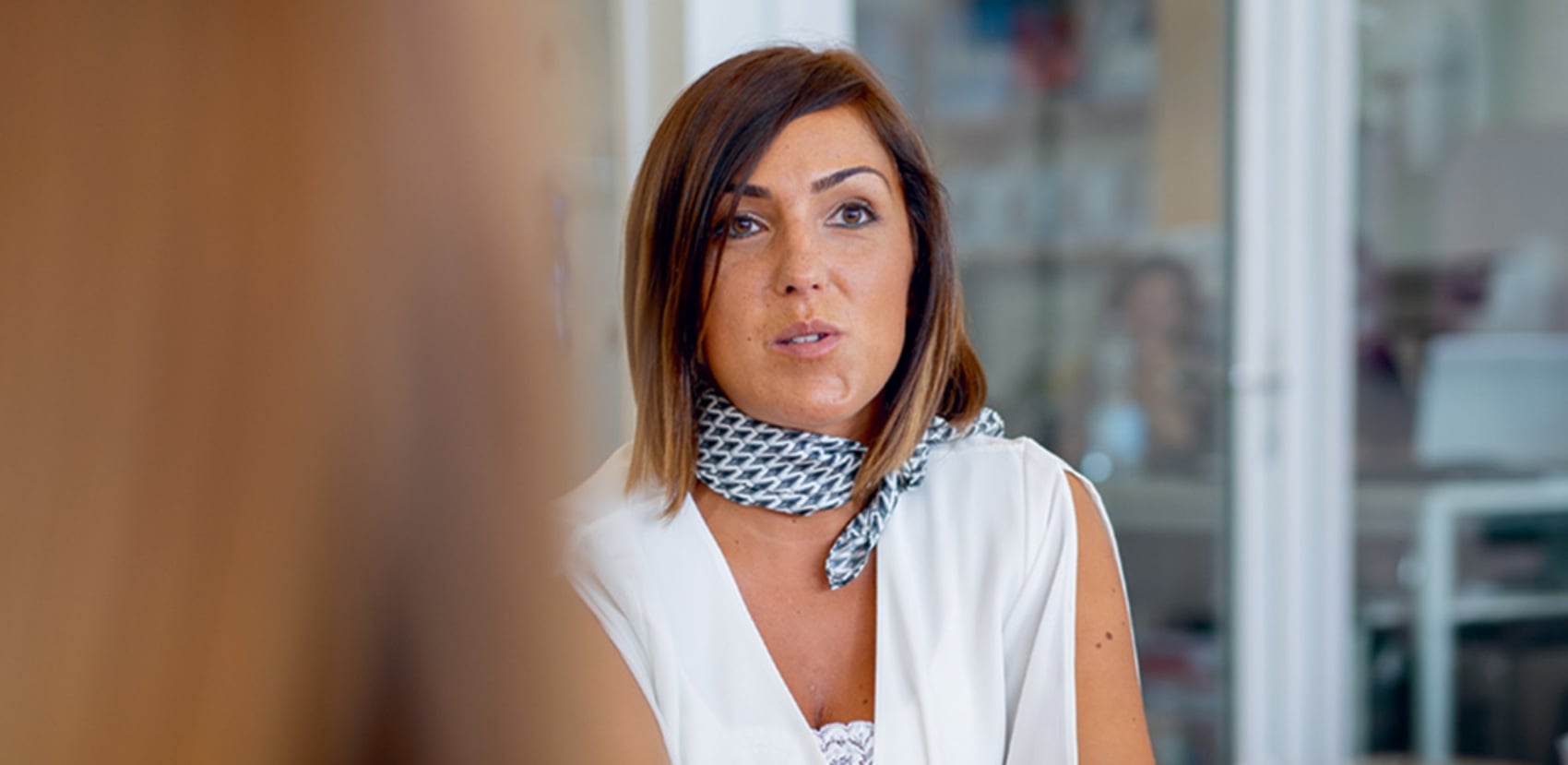
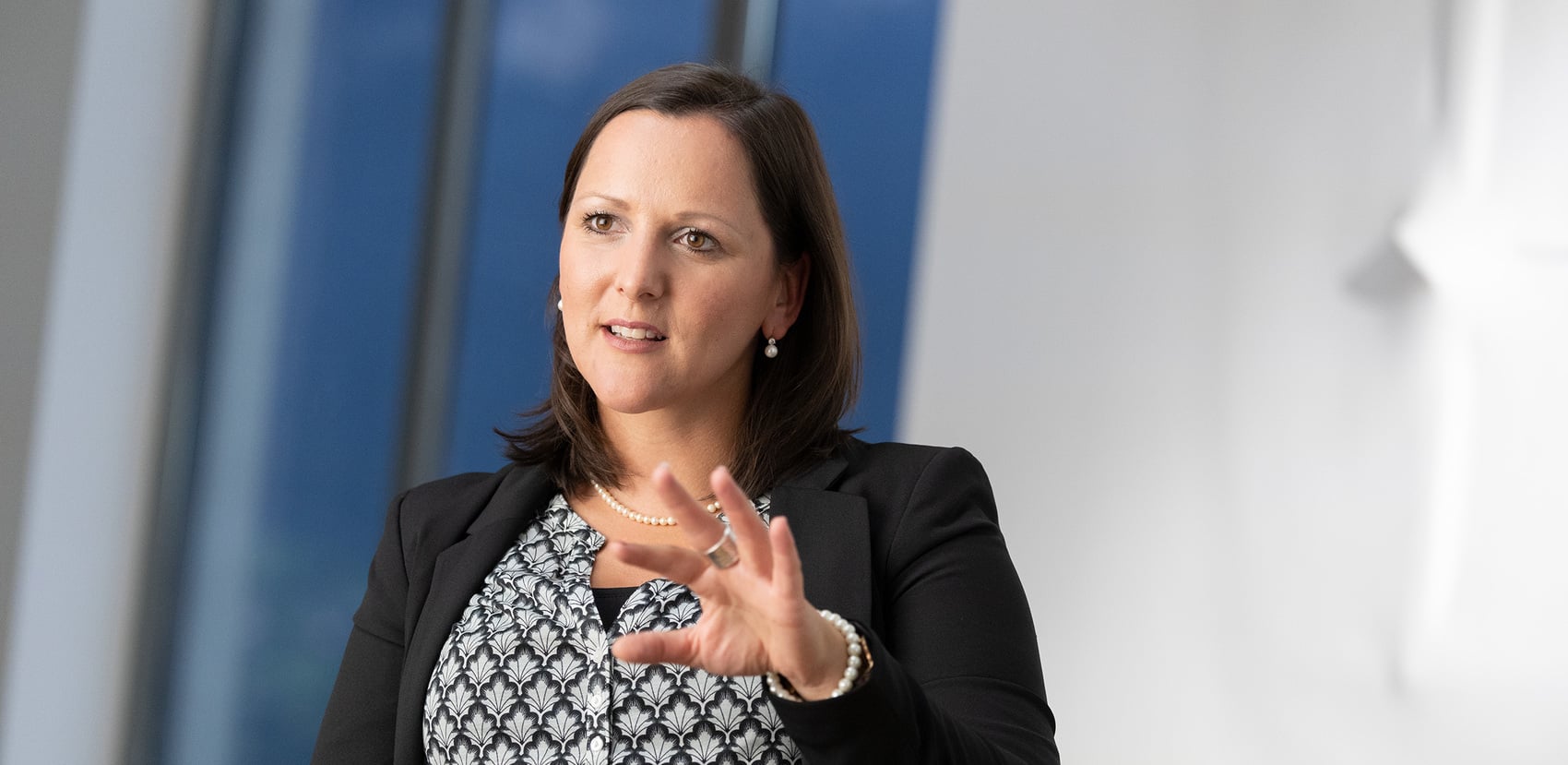
Still want more?
See here for further interesting reading matter.
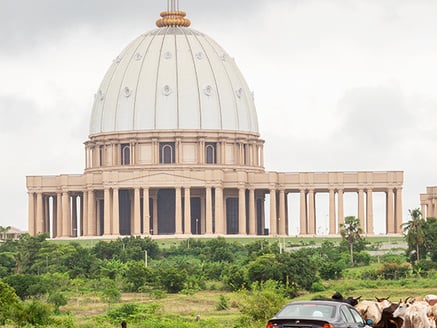

Department of Gestaltungslehre and Design – Technical University of Vienna.
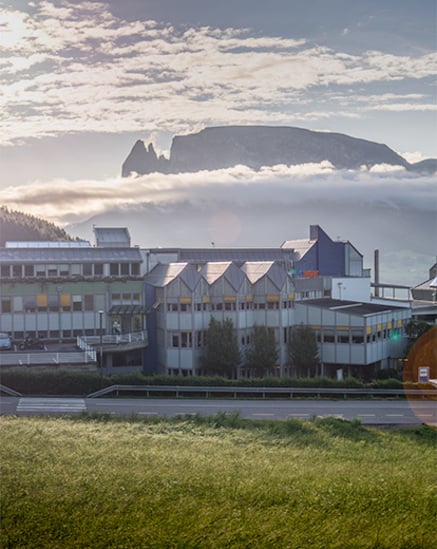
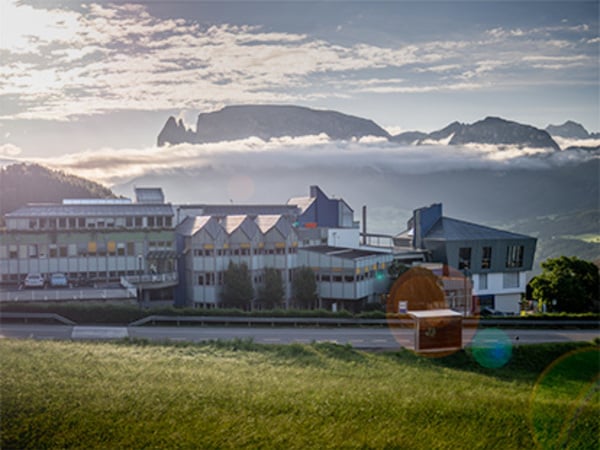
The South-Tyrolean family business is among the biggest window suppliers in Europe.
